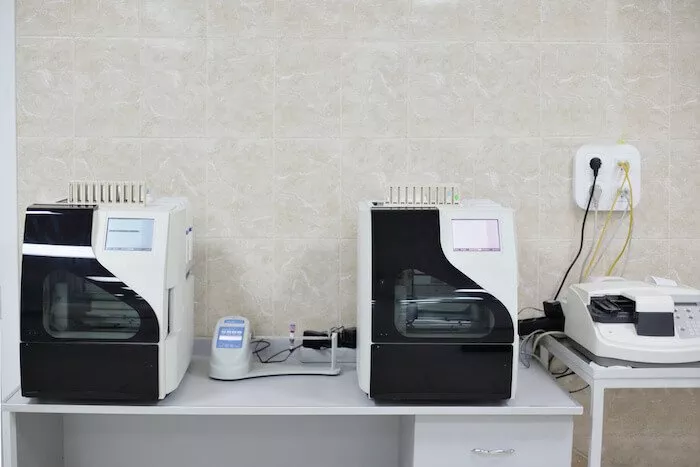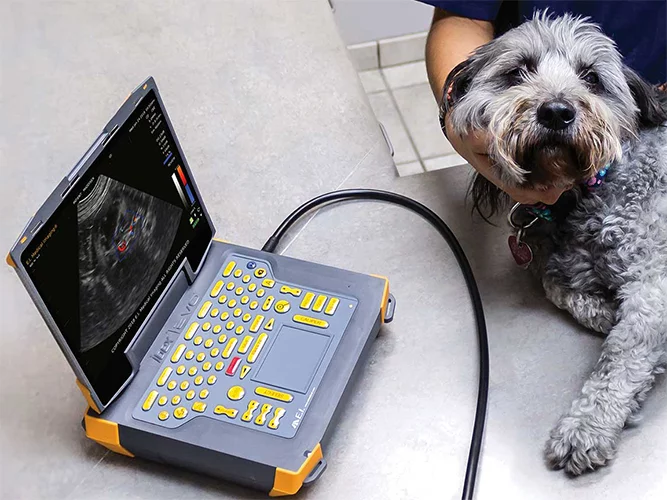
Centralized lab facilities perform hundreds of tests on blood samples and other bodily fluids providing doctors with critical information on patient health. The tests are accurate, economical, and form the foundation of non-invasive patient testing. Generally, these tests are performed by multiple, specialized, expensive machines each requiring a significant sample of the fluid under test. The tests are run in large batches with the results from multiple tests aggregated and presented to the doctor/patient 1-3 days after the fluid samples were taken. This delay in reporting leaves the patient in a state of nervousness about the results and delays any required treatment. This process also requires a follow-up visit to the clinic for consultation on treatment options after the testing results are known.
Designing an On-the-Spot In Vitro Diagnostics Device
An In Vitro Diagnostics company developed a better solution to this common need – an on-the-spot lab test instrument. They invented technology that incorporates planar waveguides into low-cost, disposable, plastic cartridges. When combined with their patented fluorescence assay illumination and imaging system the result is an invitro diagnostic lab instrument capable of measuring over 50 analytes in a single cartridge using as little as a single drop of blood or other fluid. This technology provides the doctor and patient with a wide range of results in minutes, so consultation and treatment may begin immediately.
The client came to Cardinal Peak with early prototypes of the cartridge reader system for help turning the prototype into a medical device. The goal was a cost-effective, reliable, manufacturable product designed in accordance with the appropriate regulations so it would be cleared by the FDA. The client provided the planar waveguide and assay science in the cartridge and we designed the reader/tester device electronics and software. In addition, we supported the verification and validation effort.
Cardinal Peak transformed an innovative prototype into a reliable, FDA-compliant medical diagnostic device that delivers test results in minutes instead of days.
Medical Device Electronic Engineering
The electronics design consisted of three unique boards with sophisticated microcontrollers, FLASH and SDRAM memory, multiple communications interfaces, sensors, and power supplies. We provided architectural support and designed the boards delivering a complete set of design documentation including specifications, schematics, and layout files. We provided manufacturing support resulting in assembled, tested, working boards ready for software integration. Mechanical constraints and thermal issues were successfully mitigated and the cost target for the hardware was achieved.
Embedded Software Development for the Diagnostic Device
Our software team wrote all the embedded software running on the single board computer within the cartridge reader. The software was designed and documented, written and tested, in accordance with the client’s Quality Management System which is in adherence with quality regulations mandated by the US FDA (21 CFR Part 820) and the EU (98/97/EC IVD MDD and ISO 13485). All processes were compliant with IEC 62304.
An embedded version of Linux was configured, and the appropriate drivers written to support the touchscreen, temperature sensors, USB storage, audio alerts, camera, etc. A GUI Display Manager was implemented as well as a System Manager, Configuration Manager, and Alarm Manager. The software was initially tested using a test bed and informal methods, then subjected to rigorous stress testing. Finally, the formal verification and validation testing was performed on the entire reader system, and test reports written and delivered.
This In Vitro Diagnostic laboratory device serves many purposes. The initial device has evolved to serve the Food Safety market and the Water Purity market. Regardless of the market served, the result is the same – no shipping samples to the lab and waiting days for results. This instrument provides fast, reliable results in minutes so that appropriate actions can be taken to resolve any issues discovered. Cardinal Peak is proud to have been selected as a partner in the design this great product.
If you are looking for an experienced medical device engineering partner, contact us today.



